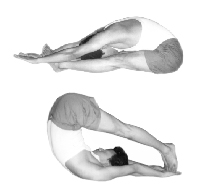How do emotions increase gastritis? When you get emotionally excited, you trigger off intense activity in the limbic area of the brain. From here you send the information down to hypothalamus which is the controller of the stress orchestra. From here the excitation passes down the sympathetic and parasympathetic nervous system. The parasympathetic (Vagus nerve) stimulates production of hydrochloric acid through release of a local hormone (Gastrin), from the lower end of the stomach (pylorus). The vagus nerve also directly stimulates the acid producing oxyntic cells of the stomach lining. The excitement proceeding down the sympathetic channel narrows down the blood vessels in the lining of the stomach. This results in decreased production of both the quantity and quality of mucus. Due to this decreased blood flow the capacity to repair and restore the damaged lining cells also is slowed down. In addition when you are stressed, it is well known that your immune system becomes less capable of handling the germs around. This inability of the fighter soldier cells (white blood cells) in the lining of the stomach to kill the germs (H. pylori), allows the germs to take the upper hand and penetrate the lining and enjoy their meal from deeper layers of the stomach! Can you see how each one of the 'Protectors' is weakened due to the long standing uncontrolled emotions (Stress)? All these happened basically because of your life style of unquenching thirst for more and more of money or name or fame or position. This can further lead to aggressive behavior, drinking, smoking etc., Thus, stressfully demanding situations leading to long standing emotional upsurges cause an imbalance between aggressors and protectors resulting in aggressors taking the upper hand and damage the stomach lining. HALASANA - PASCIMATANASANA SWING Sthiti: Supine Posture Practice -
Inhale and raise both the legs rapidly by pressing down on the arms. -
Exhale and roll the legs over the head keeping the legs straight and touch the toes to the ground like in Halasana. -
Then inhale and exhale to roll the body rapidly back to starting position. -
Now quickly inhale to sit up. -
Exhale and bend forward into Paschimatanasana keeping the knees perfectly straight. Try to touch the forehead to the knees. -
Rock back and forth alternately into Halasana and Paschimatanasana in this manner 10 to 15 times. Note: -
Start slowly and gradually increase the speed. -
The practice should be performed with flowing movements. -
Allow the breathing to be smooth, rhythmic and natural. -
Do not bend the knees at any stage of the practice. |